Planting and Caring for Fruit Trees: A Guide
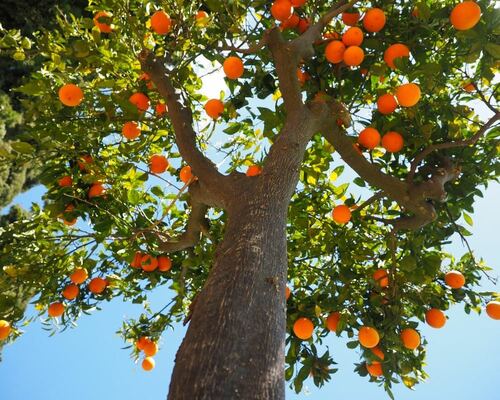
Introduction
If you are interested in growing your own fruit trees in your backyard, this is the comprehensive guide for you. While it can seem like an incredibly intimidating prospect, they are actually surprisingly easy to grow.
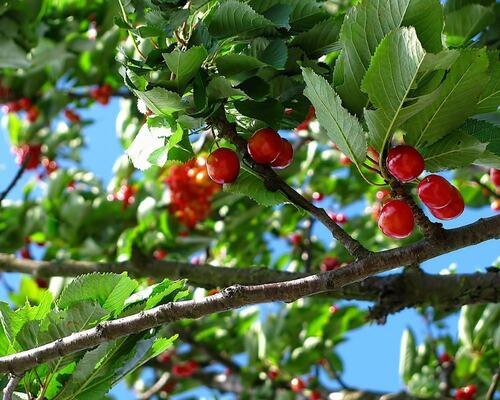
Ripe Red Cherries on a Branch - Image by Jiří Rotrekl from Pixabay
Many of them, including peaches, apples, pears, and plums, are actually able to thrive easily in a number of climates. You don’t have to live in a tropical area to have a successful time planting trees like these. You should still research to ensure that the tree you will be planting and caring for will be able to grow in your area just to ensure that it is a suitable choice.
Let’s get into the specifics of choosing and planting fruit trees, and then we'll talk more about the aftercare and general tree care they will need for years to come.
Choosing Your Fruit Tree
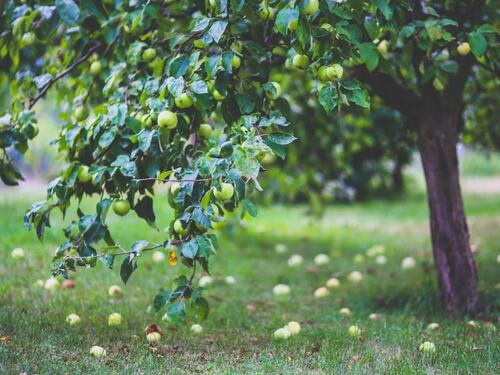
A Fruit-laden Apple Tree - Photo by Karolina Grabowska
While it may seem tempting to choose a more exotic fruit tree, your endeavor will only truly be successful if you choose a plant that can thrive in your local climate. If you aren’t sure which trees that list consists of, check with your local plant nurseries and garden centers and see what they recommend. There are also great resources online that can assist with the process.
Let’s consider the different climates and what grows well in them.
Cool-Weather Fruit Trees
If you are in the northern United States, you might consider growing cherries. Bing, Rainier, and Montmorency cherries are fantastic choices for this part of the country. Black cherries will thrive anywhere from north of Minnesota to west of Maine.
Certain types of apples can be great in northern climates as well. Some of those include Ginger Gold, Gala, McIntosh, Jonagold, Red and Golden Delicious, and many others. These apples need a certain number of cold hours per year, so the northern climate is a better choice for them. Pears like Summercrisp and Ayers also do better up north.
Peaches, while generally considered to be a warm-climate fruit, actually need cool time as well and will do well in areas with regular winters.
Warm-Weather Fruit Trees
As for the the warmer areas of the country, you have a few different options for fruit trees that will thrive there.
Citrus trees are definitely a great option, especially if you are in an area like Florida where it never gets too cold. Mandarin oranges, lemons, etc. are all trees that would thrive in warmer areas.
Plums will also thrive in a warmer climate. European plums can thrive almost anywhere in the United States, but American and Japanese plums are better off in more heated parts of the country.
Again, it is important to check locally as well. Your local plant nurseries may have specific recommendations for you that may help you choose the best fruit tree for your property.
Planting Your Fruit Tree
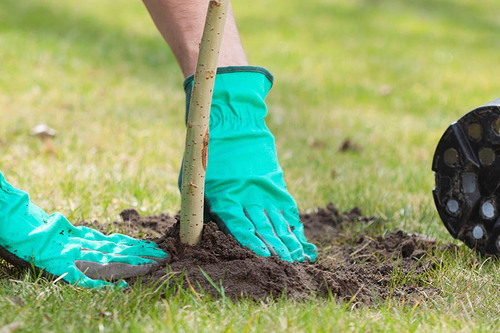
A Gardener Packs Soil Around a Newly Planted Tree
Location & Spacing
Now that you have hopefully chosen your perfect fruit tree, let’s talk about getting it planted!
First you will want to consider where to plant the tree in your yard. Make sure to consider how much sun your tree will get throughout the day, as most common fruit trees will need as much sun as they can get. Also consider putting the tree somewhere where it will have some protection from wind and/or snow.
It is also a good idea to be aware of other plants, trees, or flowers planted nearby. Fruit trees will soak up nutrients from other plants if given the chance, so give them a decently wide berth. Make sure the soil in that spot is also able to drain easily—if you have clay-heavy or clogged soil, consider adding compost to it.
Once you have your perfect spot, it’s time to make a hole for the fruit tree. You are going to want it to be about twice as wide as the roots of your tree. Also ensure that the hole you dig is not too deep; the graft at the base of the tree should be above the soil.
If you are planning on having more than one fruit tree in your yard, they will need to be spaced at least eighteen inches apart to make sure they have the space they need to grow.
Planting Technique & Soil Quality
Depending on the type of fruit tree that you have and the quality of the soil, it may be a good idea to add organic nutrients to the hole before putting the tree inside of it. Check with your local plant center to see what they recommend for your specific tree.
When putting the tree into the ground, you’ll want to position the root ball on a small mound of soil about the length of a finger. Then spread out the roots and ensure that the graft at the base will be above the soil. Also make sure that no roots are exposed when you fill in the hole.
If you are in an especially windy area, it may be a good idea to stake the tree to make sure it stays upright and planted. Simply tie it to a strong stick with cloth.
Once that step is completed, you should also give the tree a healthy layer or organic mulch. This will protect the roots of the new tree and help it retain moisture.
Lastly, if you do have deer or other wildlife in your area that could cause some damage to the tree, you may want to consider building a small fence around it.
Fruit Tree Care
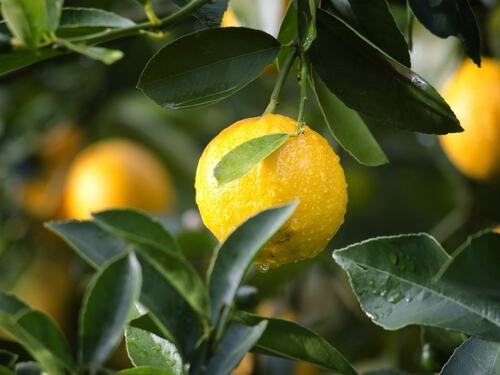
Lemons Ready to be Picked - Image by Pexels from Pixabay
Now that the tree is safely and firmly in the ground, let’s talk about how to properly take care of it.
Watering
New trees need to be watered whenever the first two inches of the soil are dry. As time passes and the fruit tree develops a more extensive root system, you will be able to water it less often. For fruit trees to produce a plentiful, juicy crop, they do need a periodic deep soak either from you or from natural rain. You can also use drip systems with a lot of success with this kind of tree.
Fertilizing
The optimal feeding schedule for your new tree should be based on how the plant is growing. If it is thriving and growing well, you can assume its needs are being met. If its performance is less than ideal, consider applying a high-nitrogen fertilizer in the early spring months.
If you notice that, even with fertilizing, the tree is not growing as it should, you may have nutrient-deficient soil. In this case, you may want to have a professional test it and follow their recommendations.
Protecting the Tree from the Sun
One aspect that often goes unnoticed with a new tree is a way to protect it from the sun. If your region has a lot of sun, consider using a diluted solution of half water, half latex paint to paint over the tree trunk. This actually acts as a sunscreen for the tree and can be very beneficial.
Pests and Disease
There are a multitude of pests and different diseases that can affect fruit trees. Consider using a dormant oil spray during the winter to help ward off many pest problems. This smothers pests as well as their winter eggs.

4 Simple Steps to Fruit Tree Care
Good Luck!
We hope that this guide to choosing, planting, and caring for your new fruit tree was beneficial to you! It can be a difficult process, especially if you're new to planting your own trees, but it is rewarding in the end.
If you do have additional tree questions for a professional, contact us anytime for any of our varied tree services!
Originally published on June 15, 2018.





